The “Banshu SOROBAN” (also known as “Banshu Abacus”) is primarily manufactured in Ono City, Hyogo Prefecture, and dates back to the Tensho era (1573-1591). During the Azuchi-Momoyama period, when military commander Hideyoshi Toyotomi laid siege to Miki Castle, many residents fled to Otsu in Shiga Prefecture. There, they learned the techniques of abacus-making. Upon returning to their hometown, they began manufacturing abacuses, marking the dawn of a new tradition.
Initially, abacus manufacturing was located in and around Miki City, Hyogo Prefecture, but production gradually shifted to Ono City. By 1960, Ono had become a major production center, with an annual output of 3.6 million units. The Banshu SOROBAN was initially developed for commercial use; however, it is now valued not only as a tool for calculation but also for its meticulous craftsmanship.
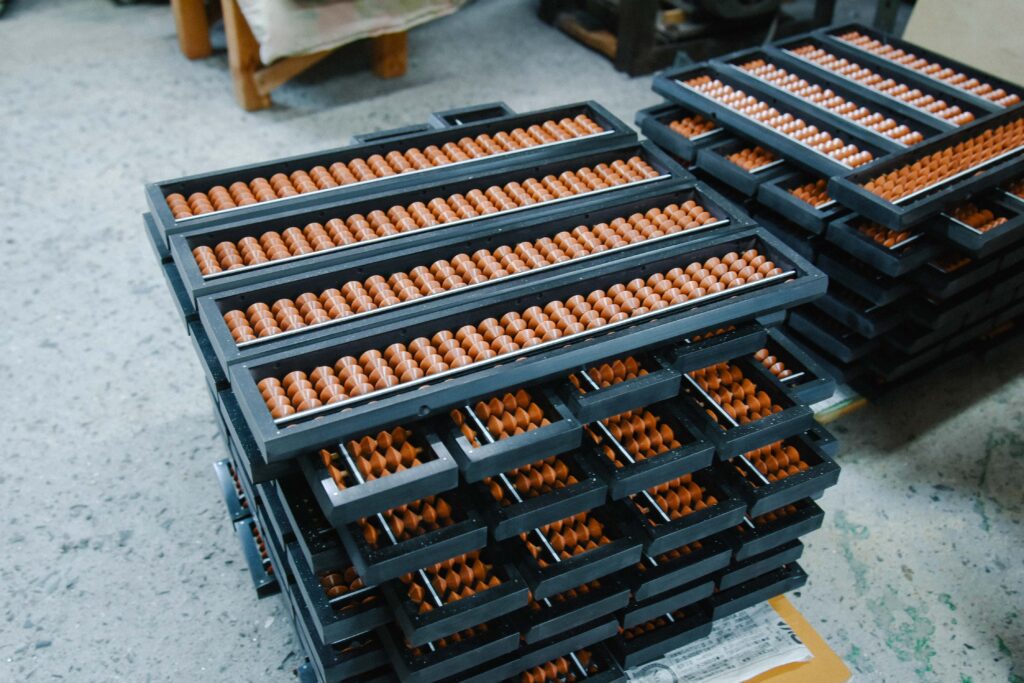
The proliferation of calculators and similar devices has seen a decline in demand for abacuses since their peak. However, the abacus is experiencing a revival in Japan as an educational tool for children. Leading this resurgence is DAIICHI, located in Ono City. Amidst a dwindling number of manufacturing companies, DAIICHI stands out in Ono as the sole business dedicated specifically to the production of abacus-inspired products.
In addition to abacus manufacturing, the company also operates the “SOROBAN Village”, where visitors can experience making their own personalized abacus.
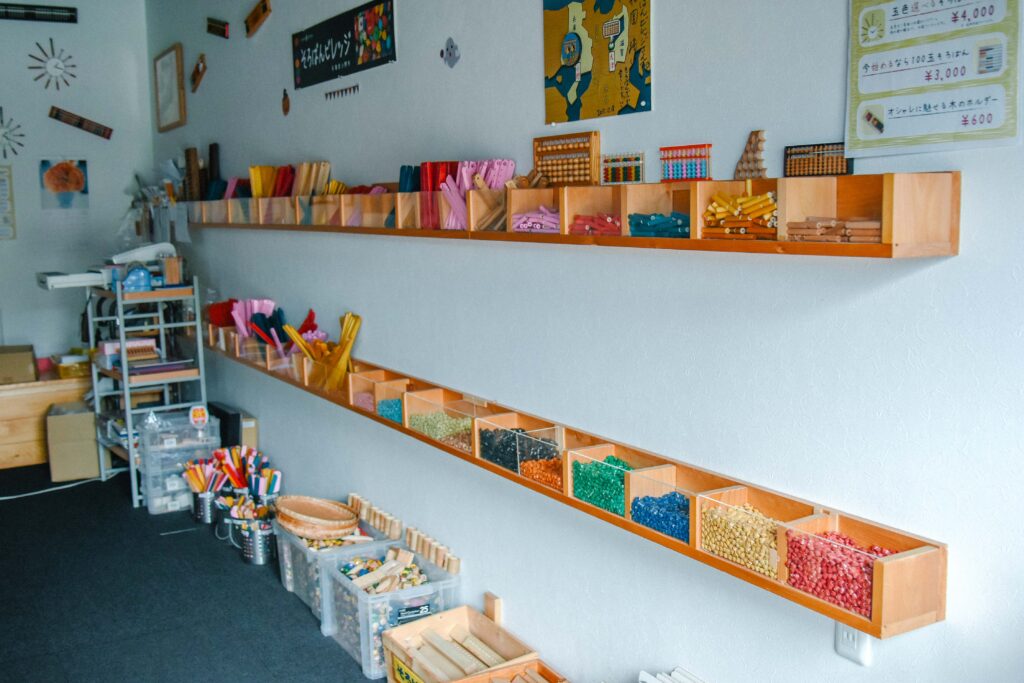
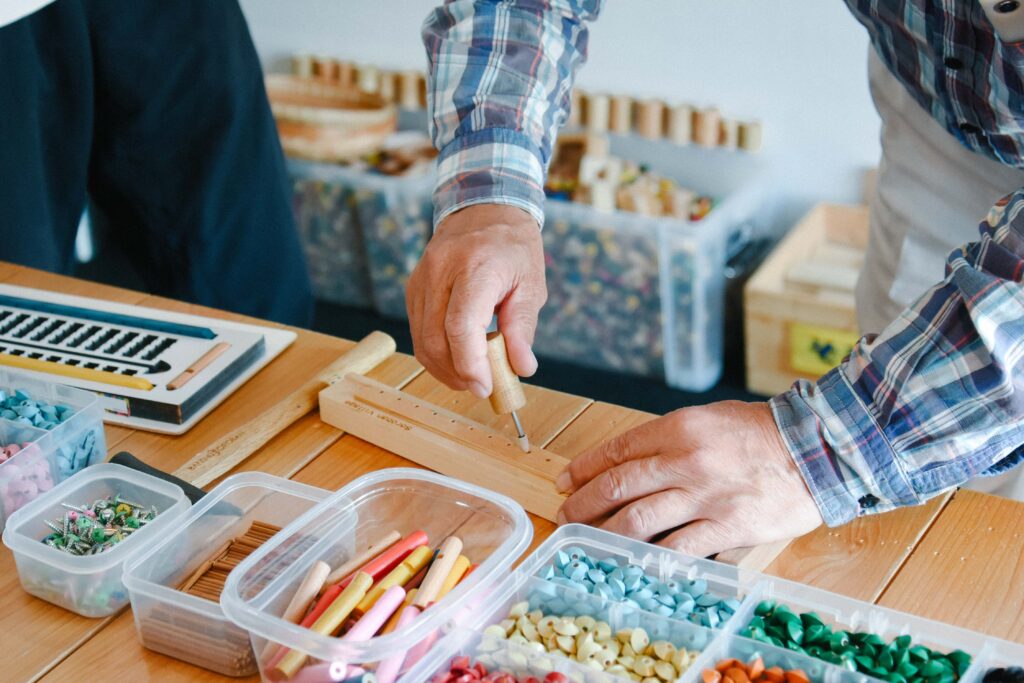
Mr. Hidetaka Miyanaga is currently the 4th-generation chairman of DAIICHI. He first became involved in the Banshu SOROBAN business while still a university student, when approached by his father, Saneharu-san, the 3rd-generation chairman to help with operations management at DAIICHI.
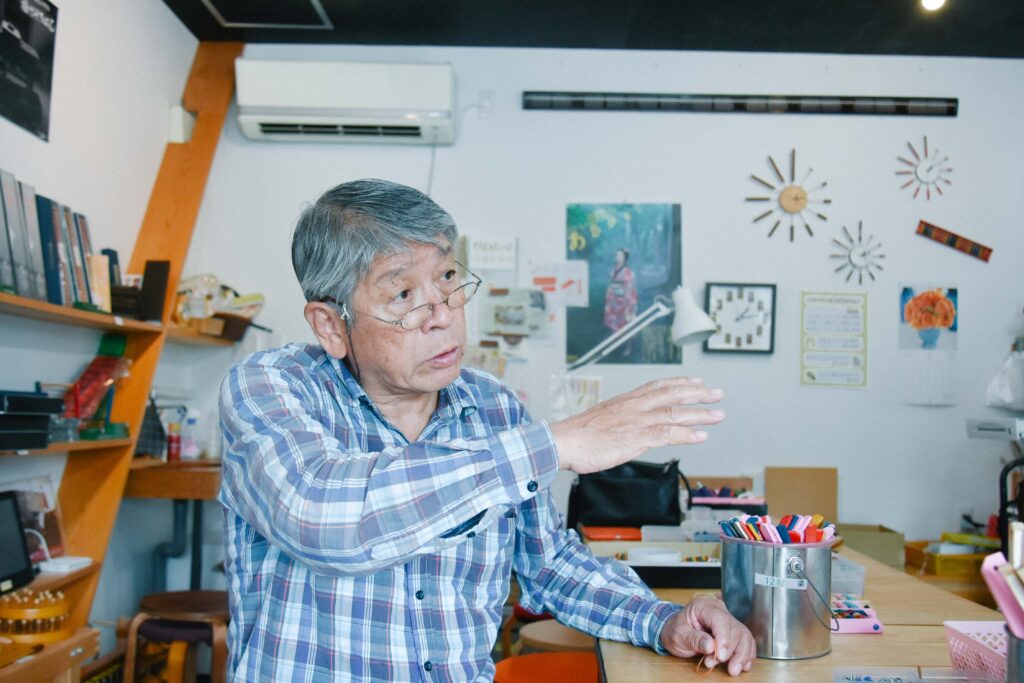
After graduating from university, Mr. Miyanaga planned to work in Tokyo, but a major issue occurred just before his graduation ceremony, which changed his life. He had recently taken an order from a certain company for 10,000 abacuses, but the day after delivering this order, DAIICHI lost contact with this client.
It turned out to be a scam, and they were not paid. In order to recover from this loss, Mr. Miyanaga decided not to go to Tokyo and instead work full-time for DAIICHI.
「I was very sorry that I was scammed, but it led to one big business opportunity. I investigated the whereabouts of 10,000 abaci that I had delivered and found that they had eventually been distributed to a company in Osaka. I asked the company to return them, but they said, ‘It’s difficult because we have already made payment’. And I was told ‘If you can’t get the money back from the company that scammed you, why don’t you make and sell something different?’ So, inspired by the mahjong I used to play, I produced an abacus called ‘Tentry Pad’ with a notebook to write down scores of mahjong games, which the Osaka company then distributed to the wholesalers.」
At the time, mahjong parlors were popular and the Tentry Pad sold well. 「We were able to recover our losses.」said Mr. Miyanaga. After that, he continued to create many abacus-inspired products, and is often referred to as the “Edison of Ono” by those who are close to him.
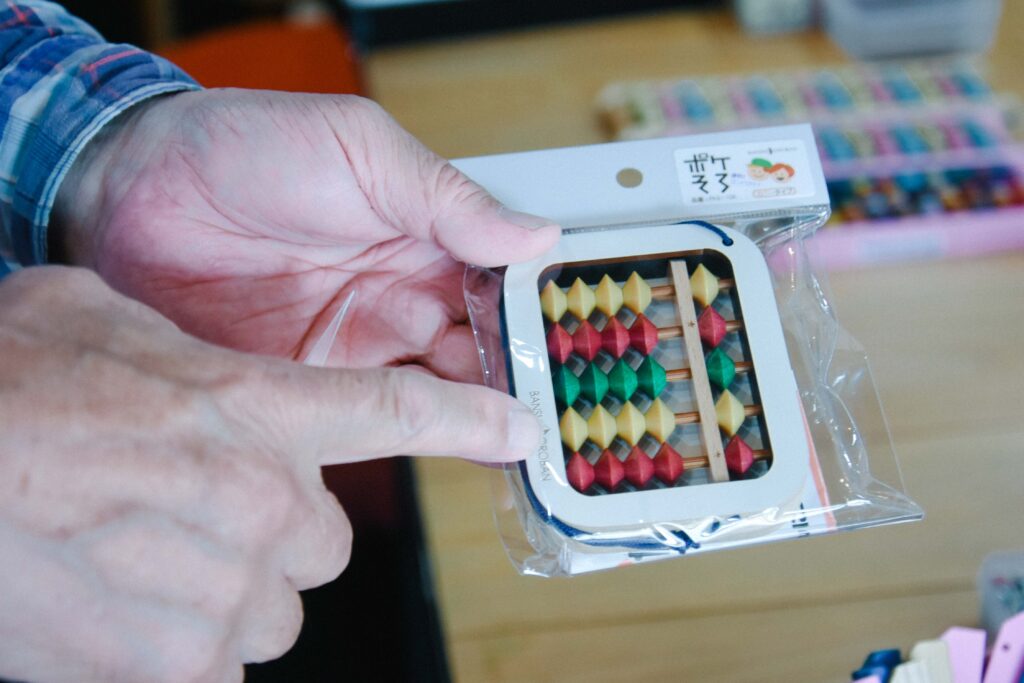
Without being constrained by conventional ideas, DAIICHI makes abacus-inspired products that are more accessible to a wider audience
Currently, the most common form of abacus on sale today is one made of plastic. In contrast, the Banshu SOROBAN is entirely crafted from natural materials such as wood and bamboo, from the beads to the frame.
Originally made entirely by hand, the DAIICHI abacus is now manufactured using specifically designed machines developed by skilled craftspeople in the 1950s. The machine used for the delicate carving of these small beads and the precision of the “popping-out” mechanism used to finish them has even been complimented by watchmakers as a「wonderful machine!」
The manufacturing process of the abacus is divided into specialized tasks for each stage, including bead carving, finishing the beads, rod making, and assembly.
「An abacus has a bead hole diameter of 3.05 mm, and a bamboo rod thickness of 2.95 mm, which must fit tightly together or it won’t work. The machines developed in the 1950s for this delicate work are still in use today. The craftspeople who invented them were truly amazing!」
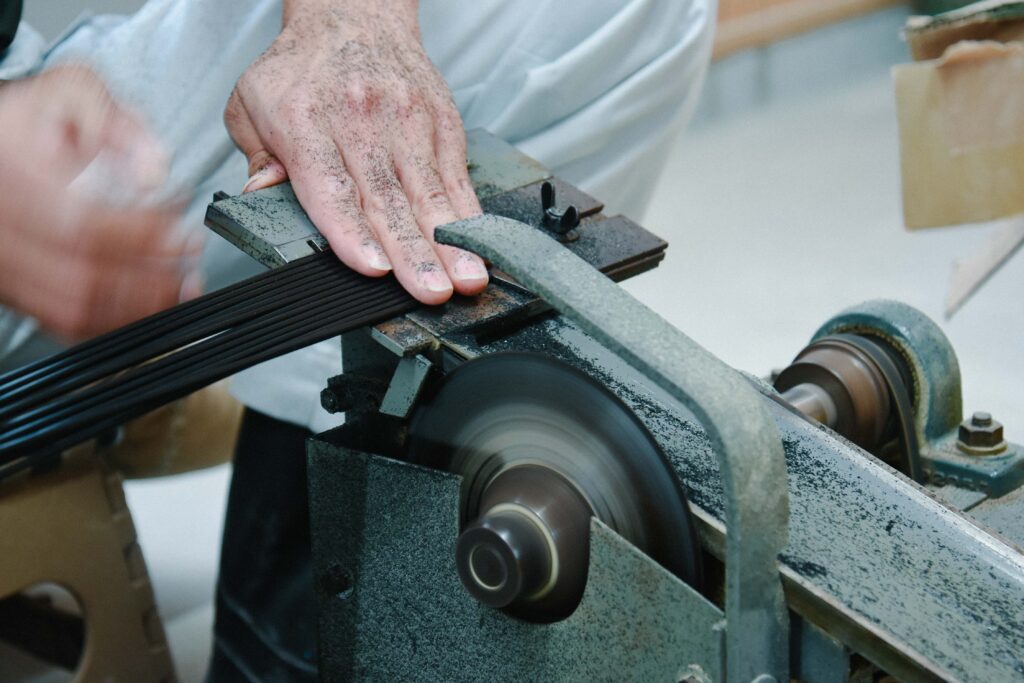
DAIICHI also uses its Banshu SOROBAN know-how to create many unique abacus-inspired products, including educational toys and key rings.
Mr. Miyanaga’s slogan is “Inspiring non-abacus users to buy abacus inspired goods“. He has taken the abacus as inspiration to develop new products, making DAIICHI goods that appeal to a wider audience who don’t usually use soroban.
「To secure the future of the Banshu SOROBAN, we are investing in product development and sales, and The SOROBAN Village is key to help achieve this. I think it is also important for people to fully understand how abacuses are made and appreciate their beauty before they buy one. We believe that this understanding will preserve the Banshu SOROBAN for the future.」

Mr. Miyanaga and TRUCK DESIGN representative Yasuhiro Horiuchi met at a gift show in 2011. On the recommendation of a mutual acquaintance, Mr. Horiuchi visited the DAIICHI stand, and the following day, Mr. Miyanaga visited the TRUNK DESIGN office.
Immediately after visiting the office, Mr. Miyanaga asked Mr. Horiuchi to develop products inspired by the abacus. However, Mr. Horiuchi suggested an alternative approach:
「You have already developed many products in collaboration with Coelacanth Diner,」
a design company with expertise in producing products for local industries,「So let’s explore how best to market these existing products instead of creating new ones.」 This led to a new project aimed at expanding overseas sales of the Banshu SOROBAN product range.
Mr. Horiuchi visited DAIICHI many times to gain a better understanding of the Banshu SOROBAN. He observed the abacus-making process, inspected the suppliers involved, and explored marketing strategies. One of the inspirations for this was the popularity of the abacus schools.
Reflecting back to the start, Mr Horuchi says,「At the time, soroban schools were very popular and introduced the abacus as a way of learning calculation. Having seen this, I thought it would be a good idea to sell the culture of calculation learning rather than the abacus itself. So, I proposed that we do workshops abroad that combine the abacus-making experience with calculation learning.」

Participating in the MORE THAN PROJECT and hosting workshops
They organized SOROBAN Village workshops abroad for people to experience the joy and fun of calculation using the abacus. Through these workshops, they were able to increase the number of overseas customers.
Together Mr.Miyanaga and Mr. Horiuchi have held workshops in many countries, including Taiwan, China, Vietnam and Singapore.
「The abacus is used in 140 counties, each with their own learning program. We are excited about the possibility of spreading the use of the DAIICHI Soroban not only across Japan but also to these countries. Thanks to Mr. Horiuchi and his team, we are able to increase the possibility of keeping the Banshu SOROBAN alive.」 says Mr. Miyanaga with a smile. He seems to be full of ideas for what he would like to do in the future.

Not only do the workshops travel abroad, but overseas tourists also travel to Ono to experience the DAIICHI SOROBAN Village
Many projects are still underway at DAIICHI, including overseas sales, hosting workshops and the development of products that expand on the idea of the abacus.
「The Banshu SOROBAN is made of natural materials and is a tool that is both easy to use and beautiful. Our abacus is more expensive than the plastic ones, but we want to convey the quality of our abacuses so that people can understand the price difference. We are currently in communication with new customers in the Middle East and the USA, and we feel that we still have the potential to expand the Banshu SOROBAN to the rest of the world.」
DAIICHI’s efforts to “keep the Banshu SOROBAN alive” by combining innovative ideas with the traditional skills of craftspeople will be continued in the future.
Direction and photography by TRUNK DESIGN Inc.
Editing: Takehiko Yanase
Text: Takumi Miyamoto